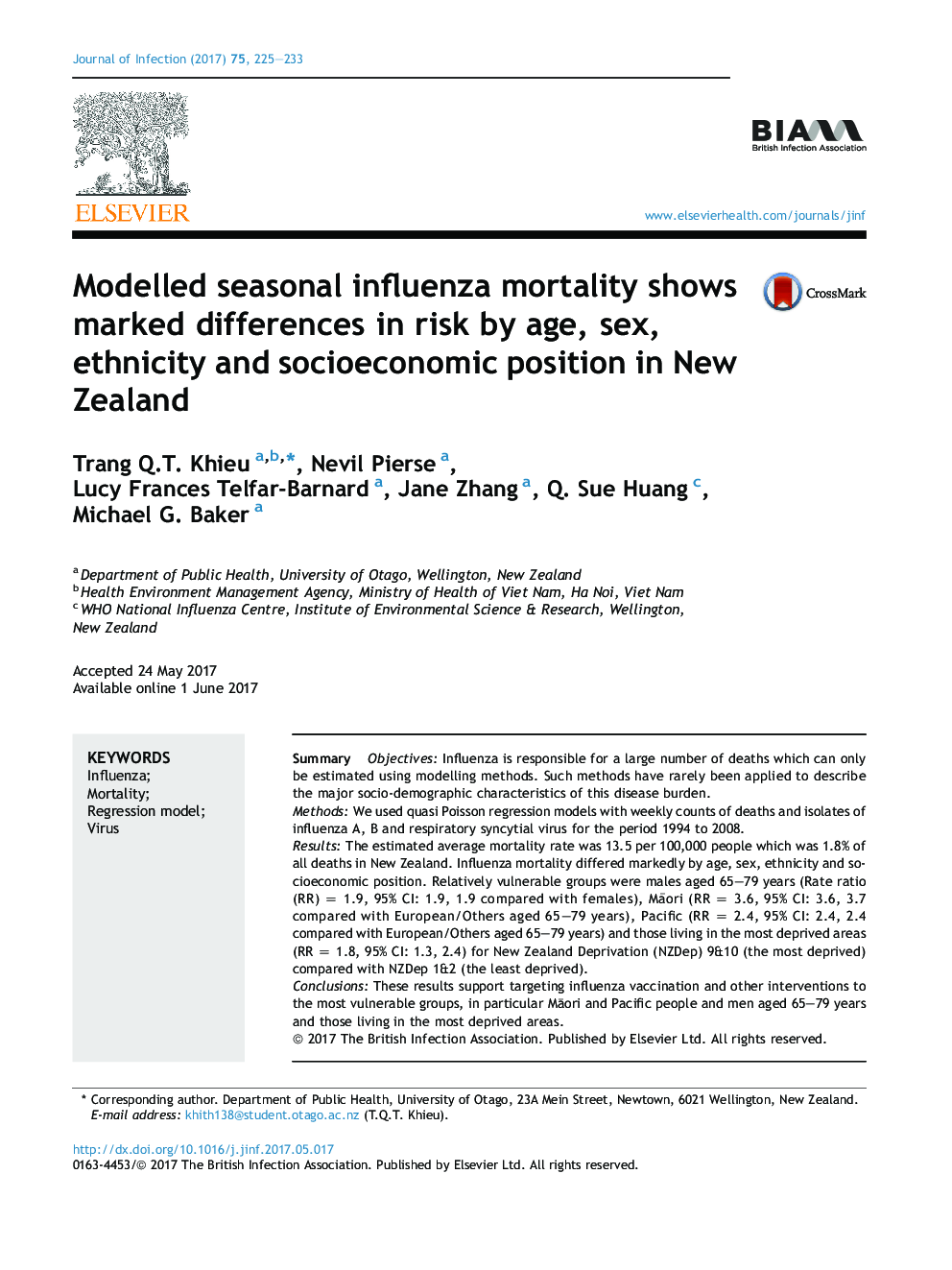| Article ID | Journal | Published Year | Pages | File Type |
|---|---|---|---|---|
| 5668610 | Journal of Infection | 2017 | 9 Pages |
â¢Total influenza-associated mortality estimated by modelling was about 23 times higher than measured influenza mortality.â¢Circulatory illness caused the largest proportion of influenza deaths, unlike hospitalisations where respiratory predominate.â¢This is the first reported use of modelling to estimate influenza mortality disparities by ethnicity and socioeconomic status.â¢Influenza mortality was associated with increasing age, male gender, MÄori & Pacific ethnicity, and neighbourhood deprivation.â¢Future research should investigate ways of reducing these marked health inequities in influenza deaths.
SummaryObjectivesInfluenza is responsible for a large number of deaths which can only be estimated using modelling methods. Such methods have rarely been applied to describe the major socio-demographic characteristics of this disease burden.MethodsWe used quasi Poisson regression models with weekly counts of deaths and isolates of influenza A, B and respiratory syncytial virus for the period 1994 to 2008.ResultsThe estimated average mortality rate was 13.5 per 100,000 people which was 1.8% of all deaths in New Zealand. Influenza mortality differed markedly by age, sex, ethnicity and socioeconomic position. Relatively vulnerable groups were males aged 65-79 years (Rate ratio (RR)Â =Â 1.9, 95% CI: 1.9, 1.9 compared with females), MÄori (RRÂ =Â 3.6, 95% CI: 3.6, 3.7 compared with European/Others aged 65-79 years), Pacific (RRÂ =Â 2.4, 95% CI: 2.4, 2.4 compared with European/Others aged 65-79 years) and those living in the most deprived areas (RRÂ =Â 1.8, 95% CI: 1.3, 2.4) for New Zealand Deprivation (NZDep) 9&10 (the most deprived) compared with NZDep 1&2 (the least deprived).ConclusionsThese results support targeting influenza vaccination and other interventions to the most vulnerable groups, in particular MÄori and Pacific people and men aged 65-79 years and those living in the most deprived areas.
